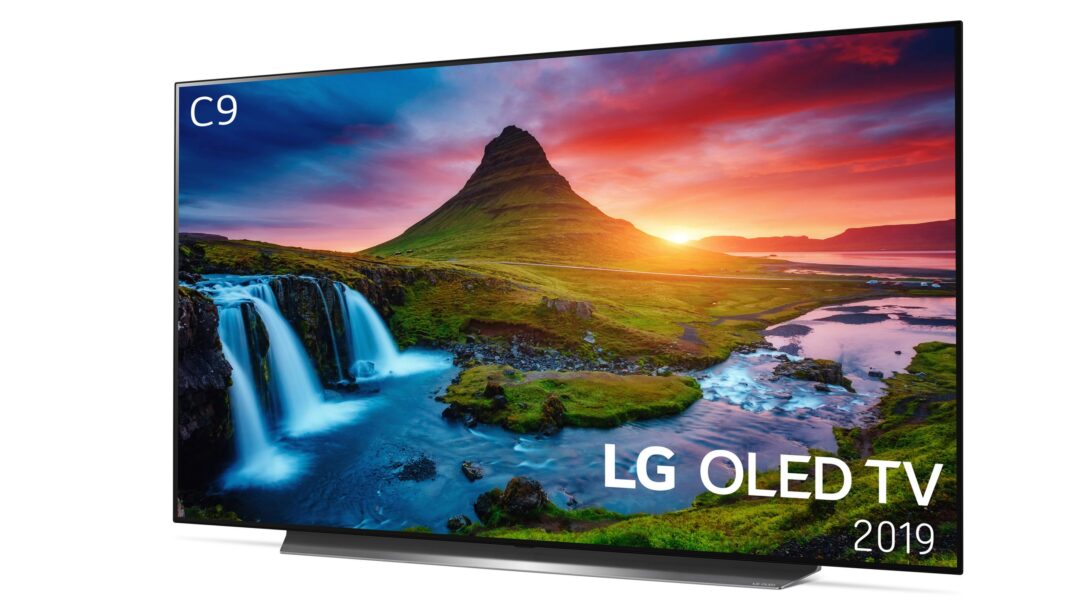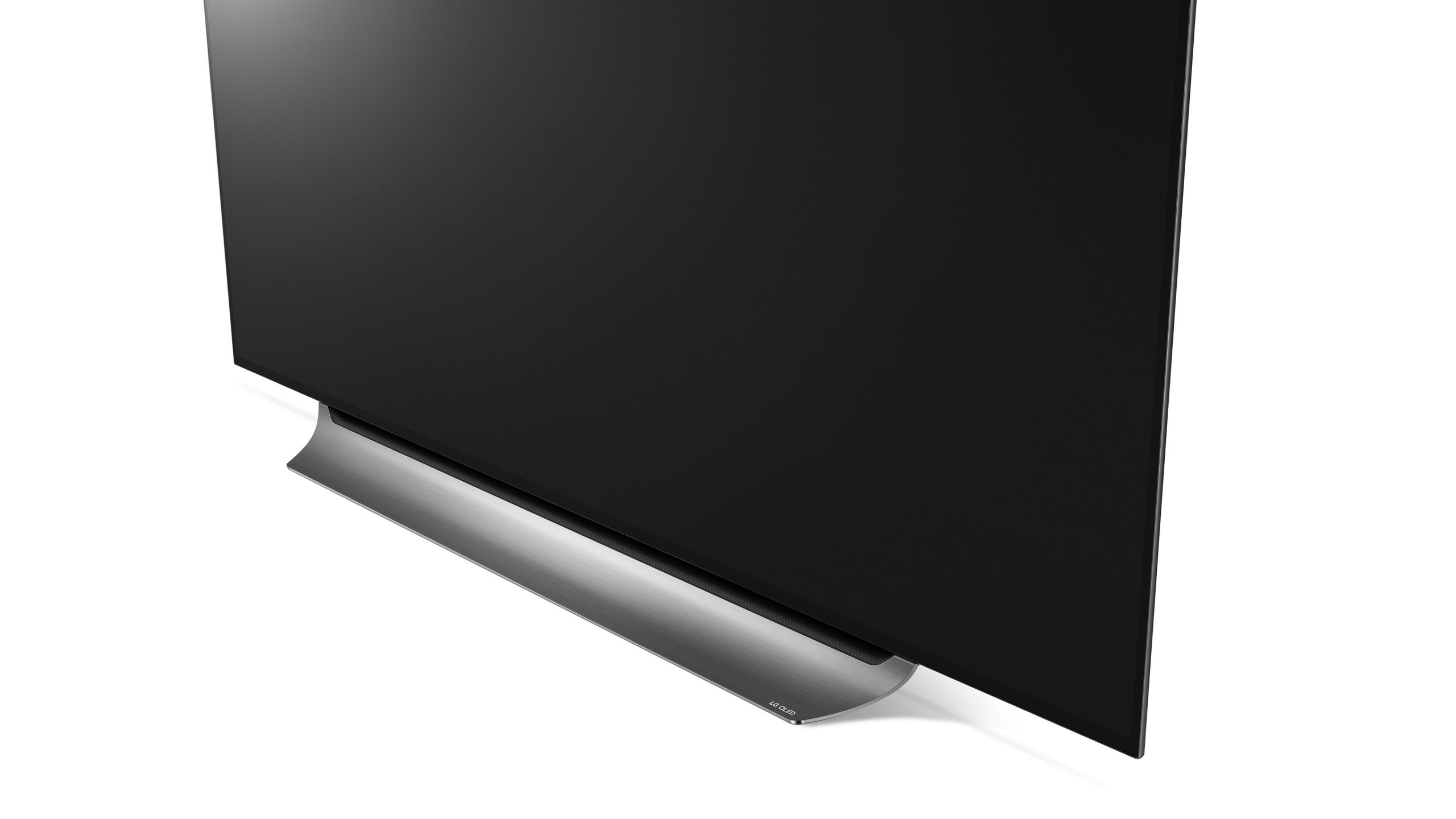If you want to be absolutely sure of getting a great picture in the TV room, just search for the largest OLED screen you can afford. LG makes all the OLED panels, so you will usually also find the nicest OLED prices on LG’s own TVs.
This is no exception when the size reaches 77 inches. Where LG has a price competitor in Philips in the 55- and 65-inch market, Philips does not produce 77-inch (or – God forbid – 88-inch!). You can hardly find any 77-inch under 10000 £, and even the LG C9 model tested here has been up to 90,000 kroner at its highest.
Which makes the 2019 model especially interesting today, at just over half the price.
The image processing received a major upgrade in 2019 compared to the previous year, and the user interface has received a slight facelift.
Design
With its large size, the OLED77C9 is, as expected, a single large black surface when viewed from the front. The frame around the image is thin, so you do not have to build anything more than it needs to. It is more expensive both inside and out than its little brother B9, at the same time as it costs less than the top model E9.
The C9 stands on a sturdy metal base, which also acts as a scattering lens for the sound from the speakers on the underside of the screen. This ensures that the sound is sent straight ahead to the listener, for the best possible sound reproduction.
The base acts as a lens that directs the sound forward. Photo: LGThe relatively glossy screen surface reflects light from the surroundings directly, almost like a mirror, only much smaller. The anti-reflective layer works so well that it is not perceived as a problem.
In fact, reflections are a bigger issue with the Samsung 82 “Q70R, even though its screen surface is dull.
An oversight when wall mounting
The speaker can be removed from the base and hung on the wall, and then a rather strong minus appears with the design. Namely that all the contacts are in the back of the TV. This means that you either have to buy a wall stand that extends well from the wall, so that you get to the back of the TV, or that you connect all sources in advance, before you hook the TV up on the wall.
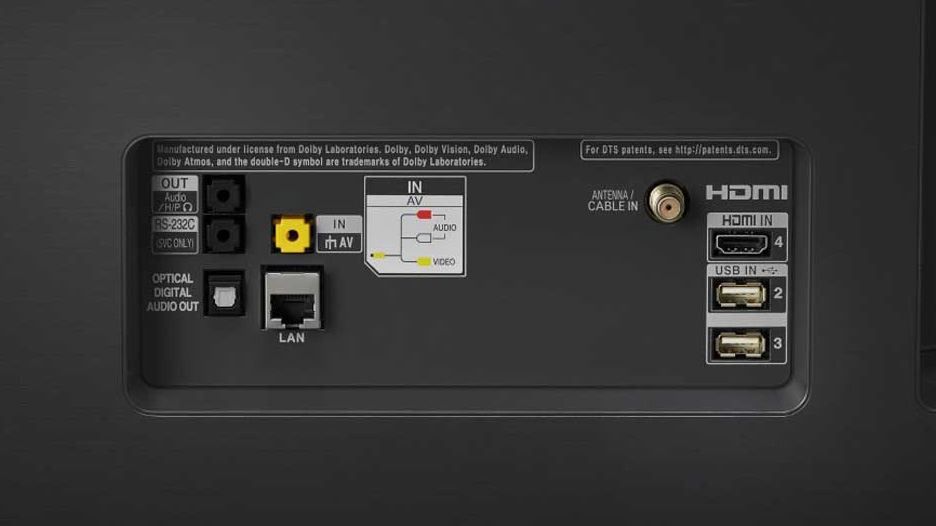
Ease of use and features
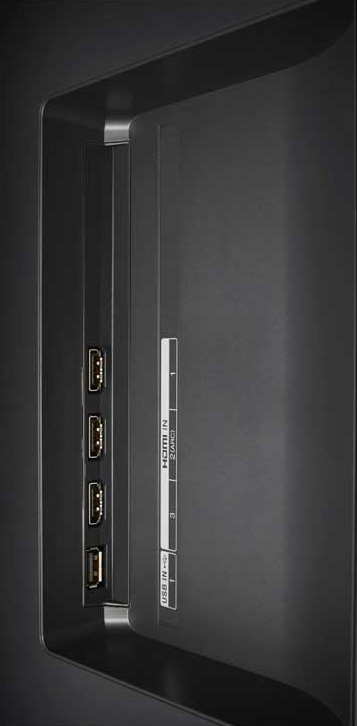
Even though we are talking about a 2019 model, the C9 has HDMI inputs of the latest standard, namely 2.1. These provide significantly higher data rates (48 Gbps versus 18 Gbps from HDMI 2.0). This offers a number of advanced possibilities, which are still a long way from being realized, but which can certainly become relevant during the TV’s expected life.
For example, 4K video can be transmitted at a frame rate of up to 120 frames per second. second. If and when that time comes.
In addition, you get an improved audio return channel (eARC) with increased bandwidth, which allows for better audio quality between the TV and audio boards.
Support for both Dolby Vision picture format and Dolby Atmos 3D sound is in place, then the soundboard or sound system must also support this.
G-SYNC
Furthermore, gaming enthusiasts can enjoy the fact that the TV is G-SYNC compliant and has a variable refresh rate, which means that users with GeForce graphics cards can connect to the screen and be sure to avoid the image breaking up, chops , or provides high input layer. The HDMI delay is only 13 milliseconds.
C9 has WebOS 4.5 operating system, which makes it quick and easy to find the content you want to see. The G7 in my own living room is significantly slower in maneuvering, so to speak.
The “Home Dashboard” menu shows relevant devices nearby, such as mobiles, Bluetooth devices, and smart IoT devices.
The voice-controlled control system ThinQ AI is also in place, and following Audun Hage’s test of the smaller 65-inch in May 2019, Google Assistant has arrived on the C9.
The app support now includes everything you need, including HBO Nordic. Netflix, Viasat and all important Norwegian TV channels are also in place.
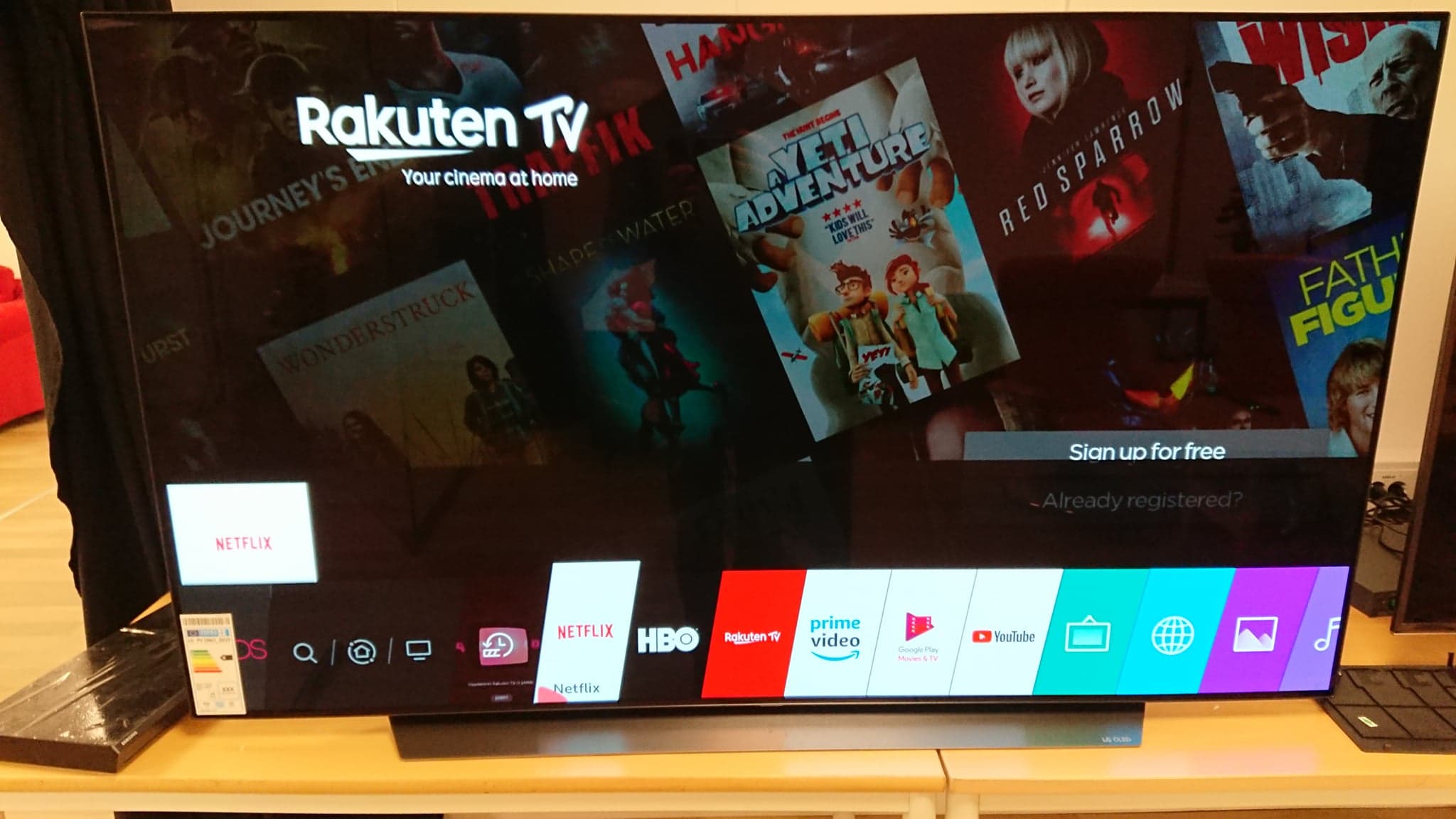
Image quality
The OLED panel itself is basically similar to the 2018 models, but the increased processing power and smarter image processing means that the image experience is still lifted a good notch. Alpha 9 Gen 2, as the image processor is called, analyzes the video material, and uses a large database (LG’s so-called Neural Network) with image information to find the best algorithms for important processes such as upscaling and noise reduction.
The picture on the OLED77C9 then also looks insanely beautiful. We do not know if it is due to “artificial intelligence” or just a lot of processing power, but the LG screen gives very good results, almost regardless of what signals it receives.
Even fairly low-resolution YouTube clips look sharp and contrast-rich, with vanishingly low noise. The same can be said about compressed TV recordings from our Canal Digital OnePlace satellite dish receiver. This ability to handle different types of content types and qualities is becoming increasingly important, as we are rapidly switching between live TV channels, HDMI sources and built-in streaming apps, with vastly different picture quality and resolution.
Prefers pure images in 4K
With 4K HDR material, I still prefer to turn off all of such functions, including smooth movements, to see the content as intended. The picture mode I then prefer is ISF Expert Bright during the day and ISF Expert Dark in the evening, with dim lighting. There is a mode called just ISF Expert, but it does not give exactly the right colors, for some reason. So steer clear of this.
With the remake of Lost In Space in Dolby Vision, the picture is so sharp and deep, with an exemplary black level, that it is almost unbelievable if you have never seen an OLED TV before. And the colors are very pleasant. It looks absolutely stunning in a dark room.
OLED is supposed to have a disadvantage over LCD with reduced brightness, but compared to the Samsung Q70R, there is actually significantly more impact in the HDR light on the LG, with Dolby Vision (which at Samsung is converted to regular HDR10). With HDR10 content, it turns around again, marginally in favor of Samsung. That’s just the brightness we’re talking about now. In dark shadows, the LG still has a big advantage in that it does not use local dimming, which occasionally mutes the shadow details too much on Samsung’s QLED TV to see them.
OLED also best during the day
The result is that even in daylight, I prefer LG’s OLED TV over Samsung’s QLED. Then it just has to be that the screen size is “only” 77 inches compared to Samsung’s 82. The difference is clearly visible when the screens are next to each other, but when truth be told, 77 inches is definitely very enough! The difference is not big anyway: the ideal distance for cinema feeling according to THX, with a 40 percent viewing angle, is 2.35 meters on the 77-inch. On the Samsung, the ideal distance increases to 2.5 meters.
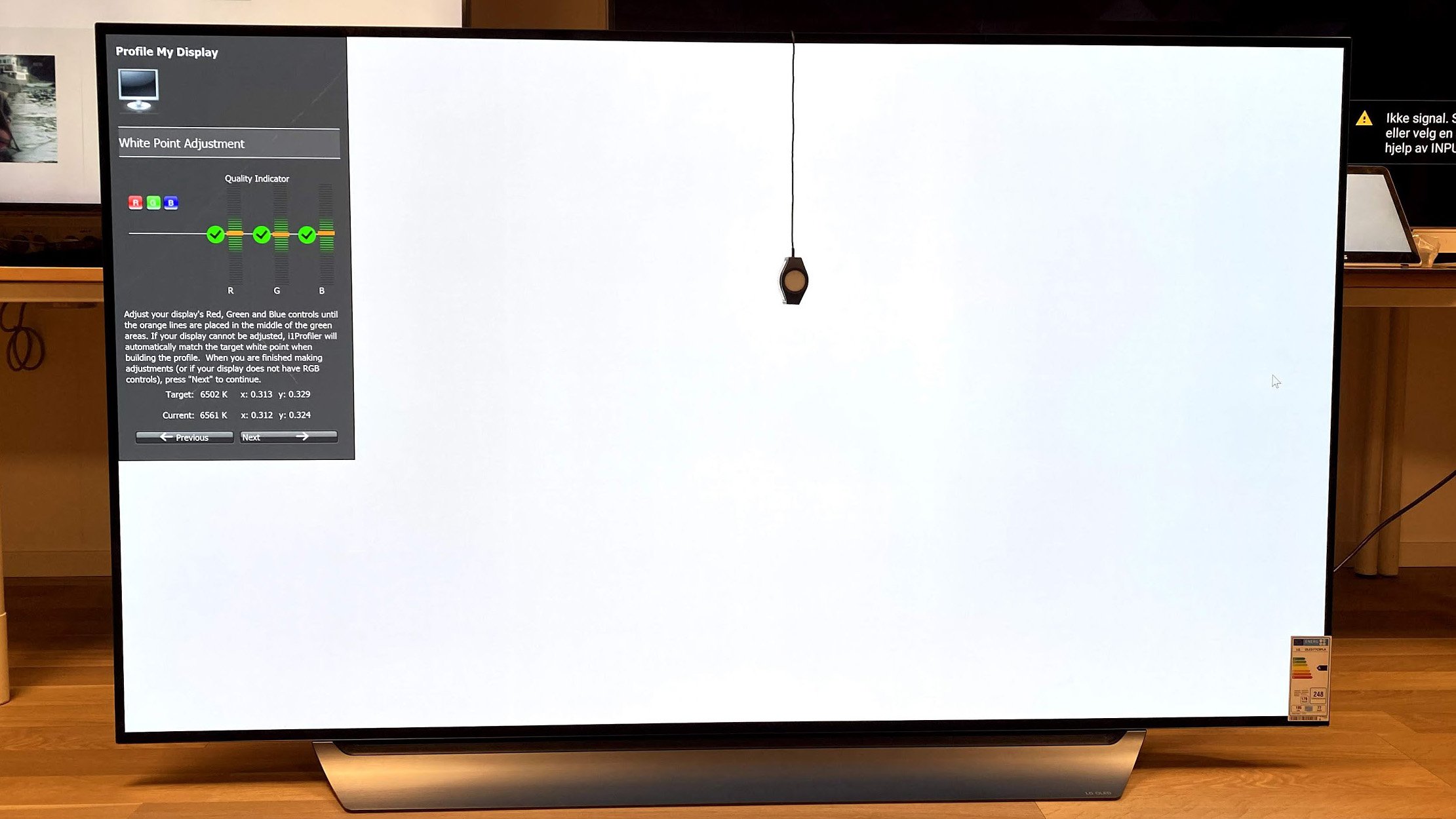
Then the color reproduction is correct on the LG TV, with more depth in the shades of red on the faces. The colors are both more comfortable, and with more shades, than I managed to get out of the Samsung (I have not resorted to advanced and user-hostile measuring equipment).
Now the LG TV is also in a price range above Samsung’s Q70, even though they are closer in the current price picture. Audun looked the 65-inch up against the Q90R, and concluded that Samsung could sometimes be confused with OLED in the black level, and that the LG TV was not unequivocally better.
Add that at the time of writing you can get an 82-inch 8K Q950 for 50,000 kroner, and it’s starting to get really interesting!
LG OLED77C9: Conclusion
The LG C9 is even better than previous models, in all areas. As a smart TV, the LG screen is lightning fast, not least for gaming, and now supports even more apps.
OLED’s foremost strengths are still the superior black level, combined with strong contrast, natural colors and a wide viewing angle. Compared to the most affordable LCD screens, the brightness is also where it should be, but more expensive LCD screens – LEDs like QLEDs – still have some gear in the spotlight.
The 77-inch C9 looks just as good as a warp these days. We can promise you that the 2020 version will be much more expensive!

We think
The image is almost monitor neutral, and has a depth perspective that surpasses most. Here you get phenomenal contrast, razor-sharp details and - when you want - smooth movements. The light on static logos can be perceived and dimmed automatically - to save the panel. Maximum HDR brightness is still not in the same league as the brightest LCD TVs (but you will hardly miss it). If you want a wealth of calibration options, you might want to look in the direction of Sony and Panasonic.
4499 €
Specifications
- Size / type: 77 ”4K OLED
- Resolution: 3840 × 2160 (4K Ultra HD)
- Operating system: WebOS 4.5
- Inputs: 4 HDMI (2.1), 2 USB
- Outputs: Optical digital audio output
- HDR: HDR10, Dolby Vision, HLG, Technicolor
- Other: Dolby Atmos compatible
- Web: lg.com
